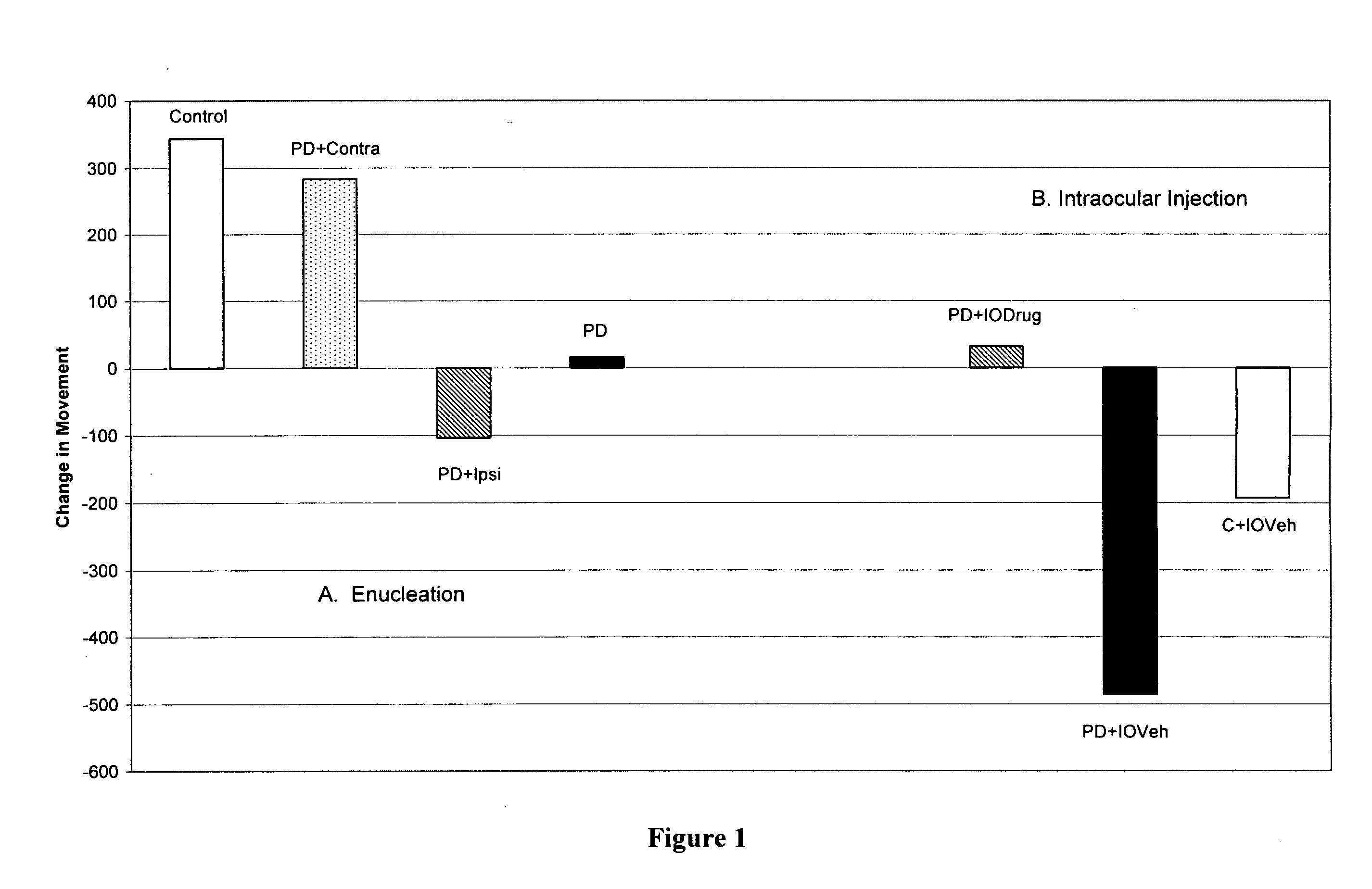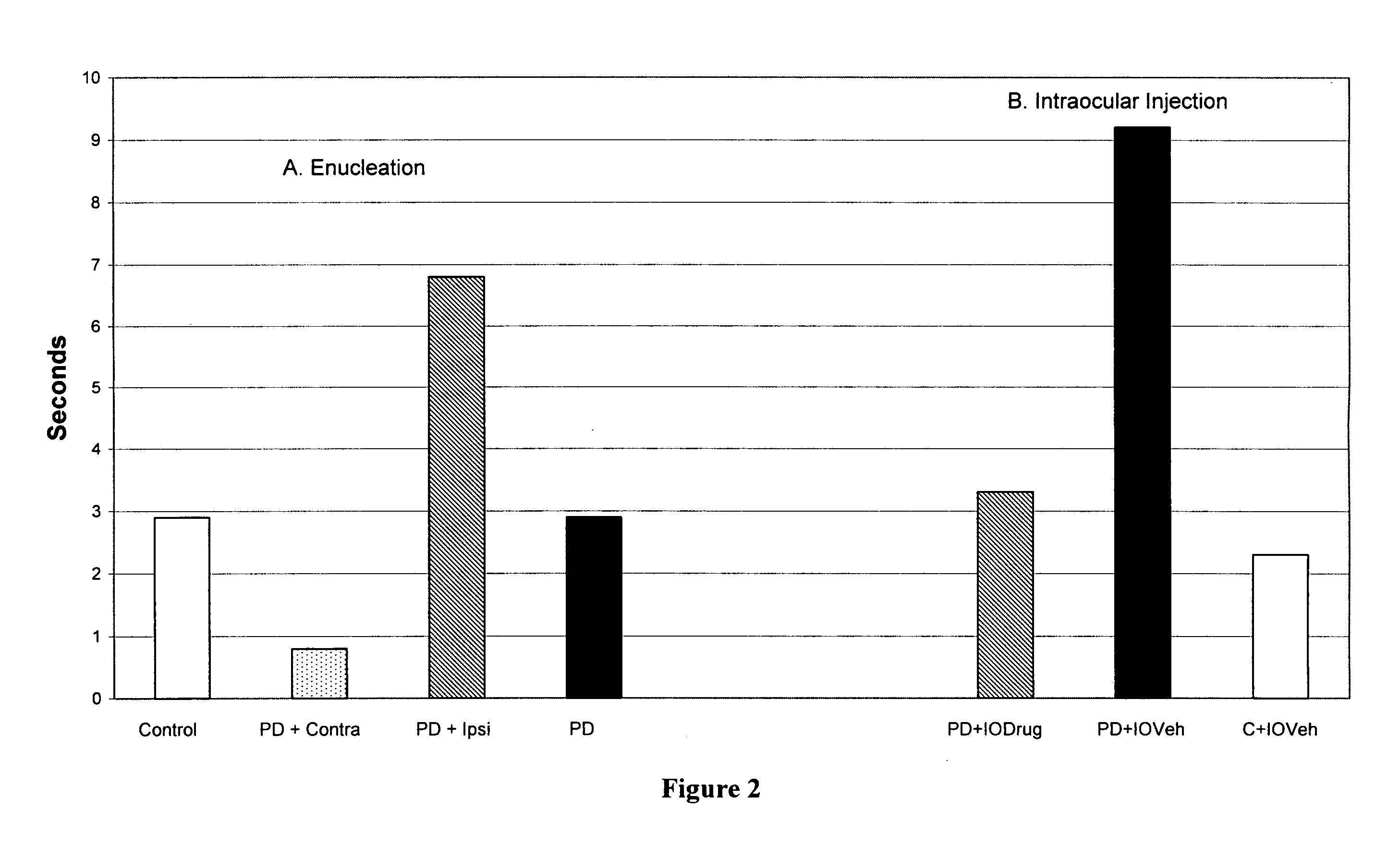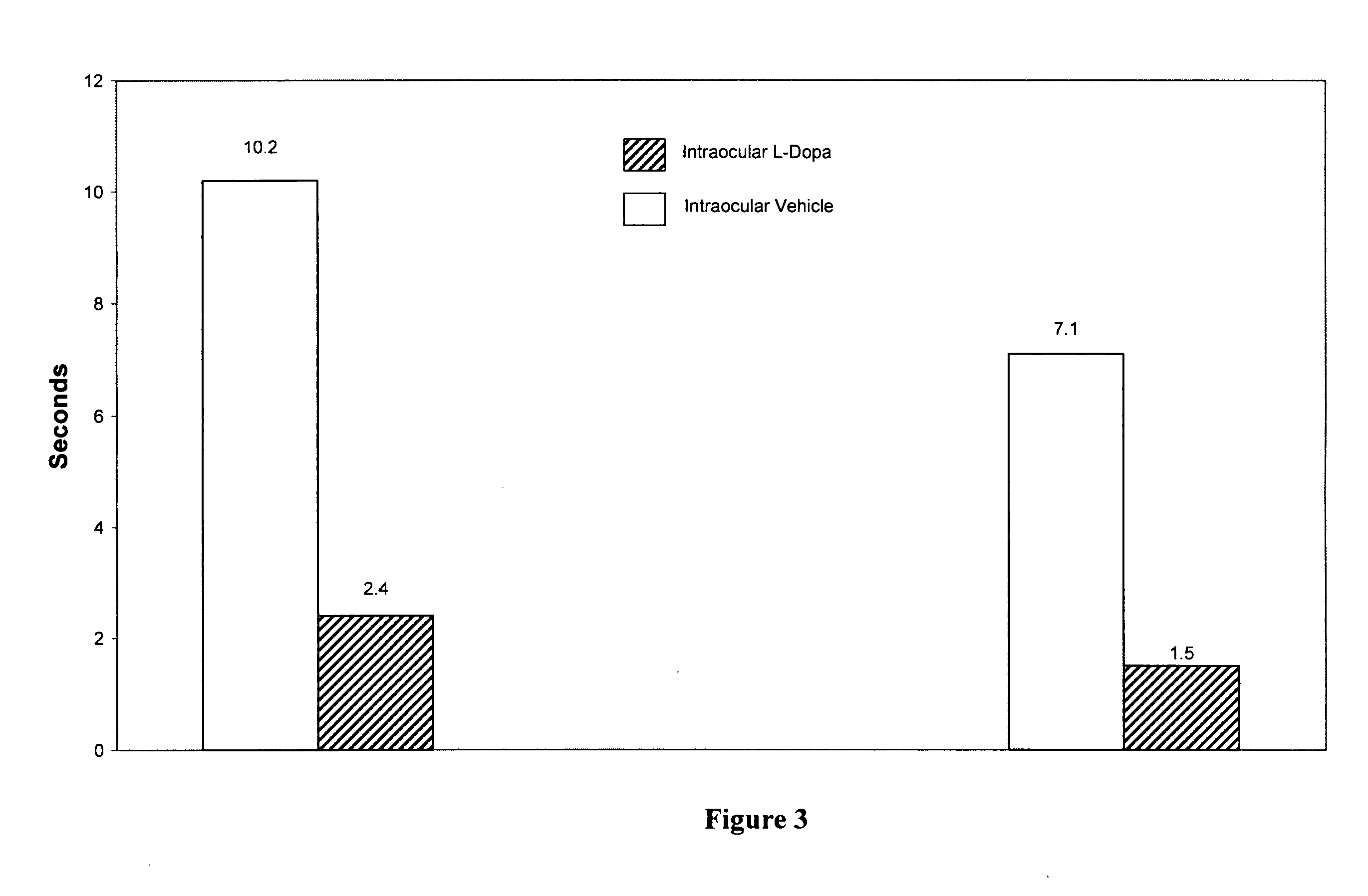Treatment or prophylaxis of a neurological or neuropsychiatric disorders via ocular administration
a neuropsychiatric disorder and ocular technology, applied in the direction of biocide, drug composition, peptide/protein ingredients, etc., can solve the problems of inability to detect and treat the disease, inability to detect the disease, and long time-consuming, so as to reduce the side effects.
- Summary
- Abstract
- Description
- Claims
- Application Information
AI Technical Summary
Benefits of technology
Problems solved by technology
Method used
Image
Examples
example 1
[0154]When lesions are strategically placed in the nigro-striatal dopamine system in the brains of experimental animals then Parkinsonian symptoms including bradykinaesia, tremor and rigidity and loss of vegetative function are seen. When a similar loss of dopamine occurs to that in humans, as detected by post-mortem examination, then Parkinson's disease results (Hornykiewicz, O. Biochem. Pharmacol., 24, 1061, 1975).
[0155]At appropriate concentrations, the neurotoxin 6-hydroxy dopamine produces specific and permanent depletion of dopamine in the brain and more specifically of the nigro-striatal dopamine system (Ungerstedt, U. et al, Adv. Neurol., 5, 421, 1974; Willis, G. L. & Armstrong, S. A., Brain Res. Rev., 27, 177, 1998). Intracranial injections of 6-hydroxy dopamine were used to produce a model of Parkinson's disease (and schizophrenia). Bilateral lesions produced a vegetative, akinetic syndrome in which there is a lack of voluntary movement, hunched posture and body weight los...
example 2
[0162]Lesions to the brain dopamine systems in mammalian brain serve as models for various neuropsychiatric disorders. When drugs such as amphetamines are administered to animals for a certain period of time psychotic symptoms develop such as increased activity, agitation and decreased latency time to perform various motor tasks. In other words, opposite to those symptoms seen in Parkinson's disease, the time to perform various motor tasks decreased: they perform them quicker.
[0163]At appropriate concentrations, the addictive drug, dl-amphetamine (1 mg / kg) was injected intraperitoneally to produce psychosis and addiction in Sprague-Dawley rats. After 5 days of such treatment each animal was tested for their level of activity in a computerized activity chamber and on three motor tests. On the day after completion of the injections half the animals received a 2 μl injection of haloperidol (12.5 μg / μl) into the vitreous humor, just in front of the retina. The other half of the animals ...
PUM
| Property | Measurement | Unit |
|---|---|---|
| neuropsychiatric disorder | aaaaa | aaaaa |
| volumes | aaaaa | aaaaa |
| time | aaaaa | aaaaa |
Abstract
Description
Claims
Application Information
 Login to View More
Login to View More - R&D
- Intellectual Property
- Life Sciences
- Materials
- Tech Scout
- Unparalleled Data Quality
- Higher Quality Content
- 60% Fewer Hallucinations
Browse by: Latest US Patents, China's latest patents, Technical Efficacy Thesaurus, Application Domain, Technology Topic, Popular Technical Reports.
© 2025 PatSnap. All rights reserved.Legal|Privacy policy|Modern Slavery Act Transparency Statement|Sitemap|About US| Contact US: help@patsnap.com



